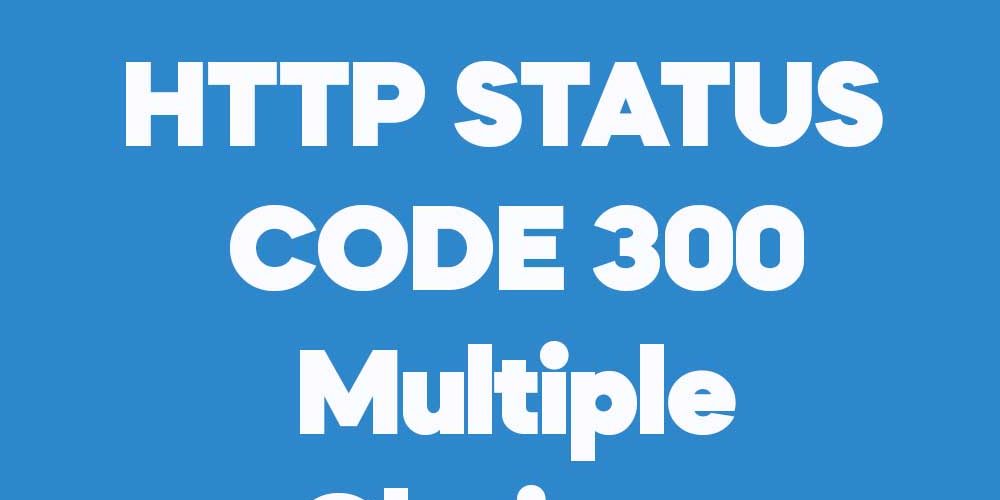What is HTTP Response Status Code 300 Multiple Choices?
HTTP response status code 300 Multiple Choices indicates that the requested resource has multiple representations, and the client can select one. The server may provide links or options to the available choices.
When is HTTP Response Status Code 300 Multiple Choices Used?
The 300 status code is used when a resource has more than one version or location, such as different languages or file types. It allows the client to choose the most appropriate option based on their needs.
Significance of HTTP Response Status Code 300 Multiple Choices in Web Development?
The 300 status code can improve user experience by giving clients options for different representations of a resource, such as language versions or media formats, making the interaction more flexible.
How to Implement HTTP Response Status Code 300 Multiple Choices?
To implement the 300 status code, the server should return this code along with links to the available representations. The client can select the preferred option based on the provided list.
FAQs
- When should I use a 300 status code? Use it when a resource has multiple versions or formats, and the client should choose one.
- Does the server select the default option in a 300 response? Not necessarily. The server may suggest a default option, but the client typically makes the choice.
- Is 300 commonly used in modern web development? No, it is rarely used as most servers prefer to redirect directly using 301 or 302 status codes.
Heres a couple of examples for 300 code in action!
Example 1: 300 Multiple Choices – Language Versions
# Client sends a GET request to access a multilingual resource.
GET /docs/tutorial HTTP/1.1
Host: www.example.com
# Server Response
HTTP/1.1 300 Multiple Choices
Date: Wed, 09 Oct 2024 11:40:00 GMT
Server: Apache/2.4.41 (Ubuntu)
Content-Type: application/json
{
"message": "Multiple versions available. Please choose a language version:",
"options": [
{
"language": "en",
"url": "https://www.example.com/docs/tutorial/en"
},
{
"language": "es",
"url": "https://www.example.com/docs/tutorial/es"
},
{
"language": "fr",
"url": "https://www.example.com/docs/tutorial/fr"
}
]
}
# The server provides multiple options for the client to choose from, allowing them to select their preferred language version.
Example 2: 300 Multiple Choices – Image Formats
# Client sends a GET request for an image resource.
GET /images/logo HTTP/1.1
Host: www.example.com
# Server Response
HTTP/1.1 300 Multiple Choices
Date: Wed, 09 Oct 2024 11:45:00 GMT
Server: Nginx/1.18.0
Content-Type: application/json
{
"message": "Multiple image formats available. Please choose one:",
"options": [
{
"format": "JPEG",
"url": "https://www.example.com/images/logo.jpg"
},
{
"format": "PNG",
"url": "https://www.example.com/images/logo.png"
},
{
"format": "SVG",
"url": "https://www.example.com/images/logo.svg"
}
]
}
# The server provides multiple formats for the image, allowing the client to select the most suitable one.


